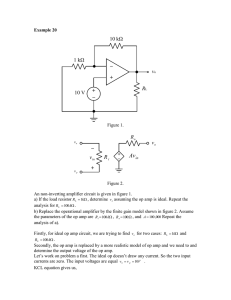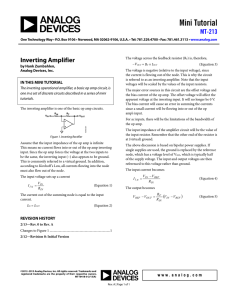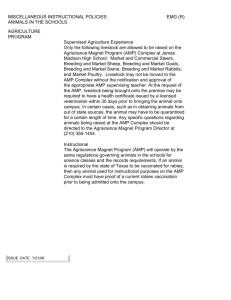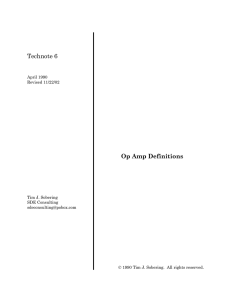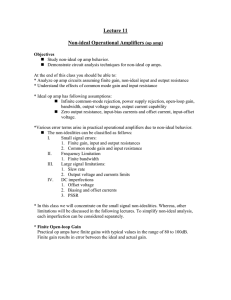Av R v _
advertisement
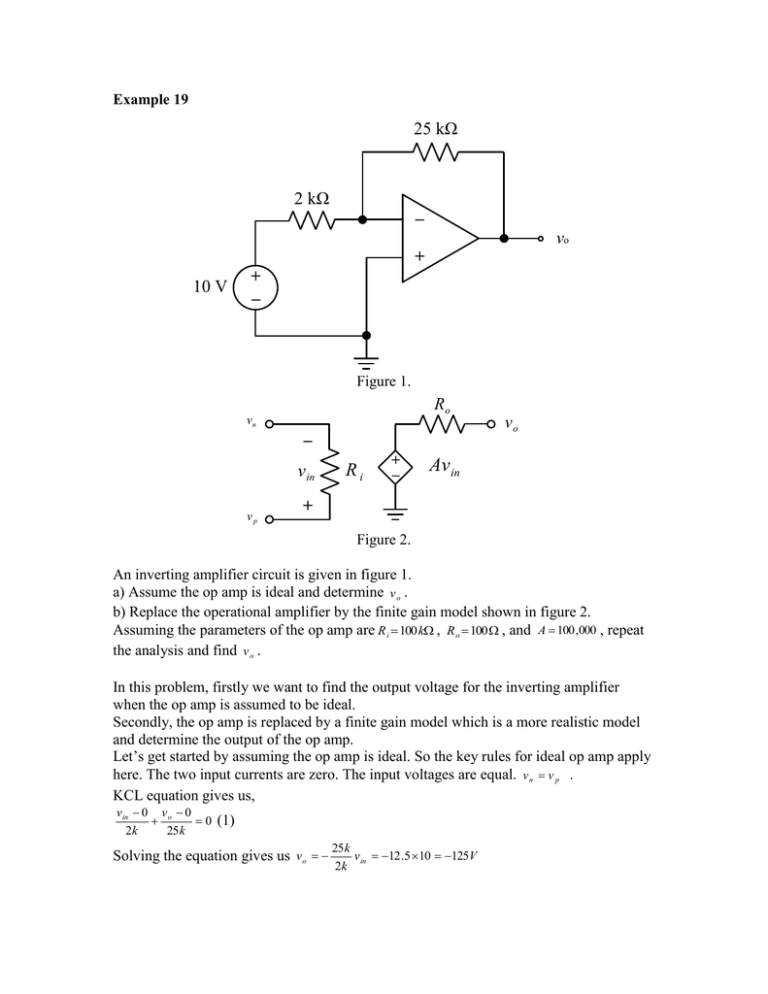
Example 19 25 kΩ 2 kΩ _ vo + 10 V + _ Figure 1. vn Ro v in vp vo _ Ri + _ Av in + Figure 2. An inverting amplifier circuit is given in figure 1. a) Assume the op amp is ideal and determine v o . b) Replace the operational amplifier by the finite gain model shown in figure 2. Assuming the parameters of the op amp are R i 100 k , R o 100 , and A 100 ,000 , repeat the analysis and find v o . In this problem, firstly we want to find the output voltage for the inverting amplifier when the op amp is assumed to be ideal. Secondly, the op amp is replaced by a finite gain model which is a more realistic model and determine the output of the op amp. Let’s get started by assuming the op amp is ideal. So the key rules for ideal op amp apply here. The two input currents are zero. The input voltages are equal. v n v p . KCL equation gives us, v in 0 v o 0 0 2k 25 k (1) Solving the equation gives us v o 25 k v in 12 .5 10 125V 2k As we know, the ideal op amp is a simplified model for op amp. In problem b), we want to use a more realistic model which is called finite gain model. There are a couple of modifications to the ideal op amp, 1) the input resistance Ri is finite . 2) The open loop gain A is also finite. 3) The output resistance R o is not zero. Let us connected the input resistor to the op amp and there the 10V power supply should be connected. There is a feed back resistor between the inverting node and the output node. Let us try to analyze the circuit by node voltage method. v n 10 v n 0 v n v o 0 2 100 25 v 0 Av in v o v n 0 2 25 (2) v 0 (0 v n ) v o v n 0 2 25 Two variables for two equations. Solving the equations gives us vo 124 .98V (3)
